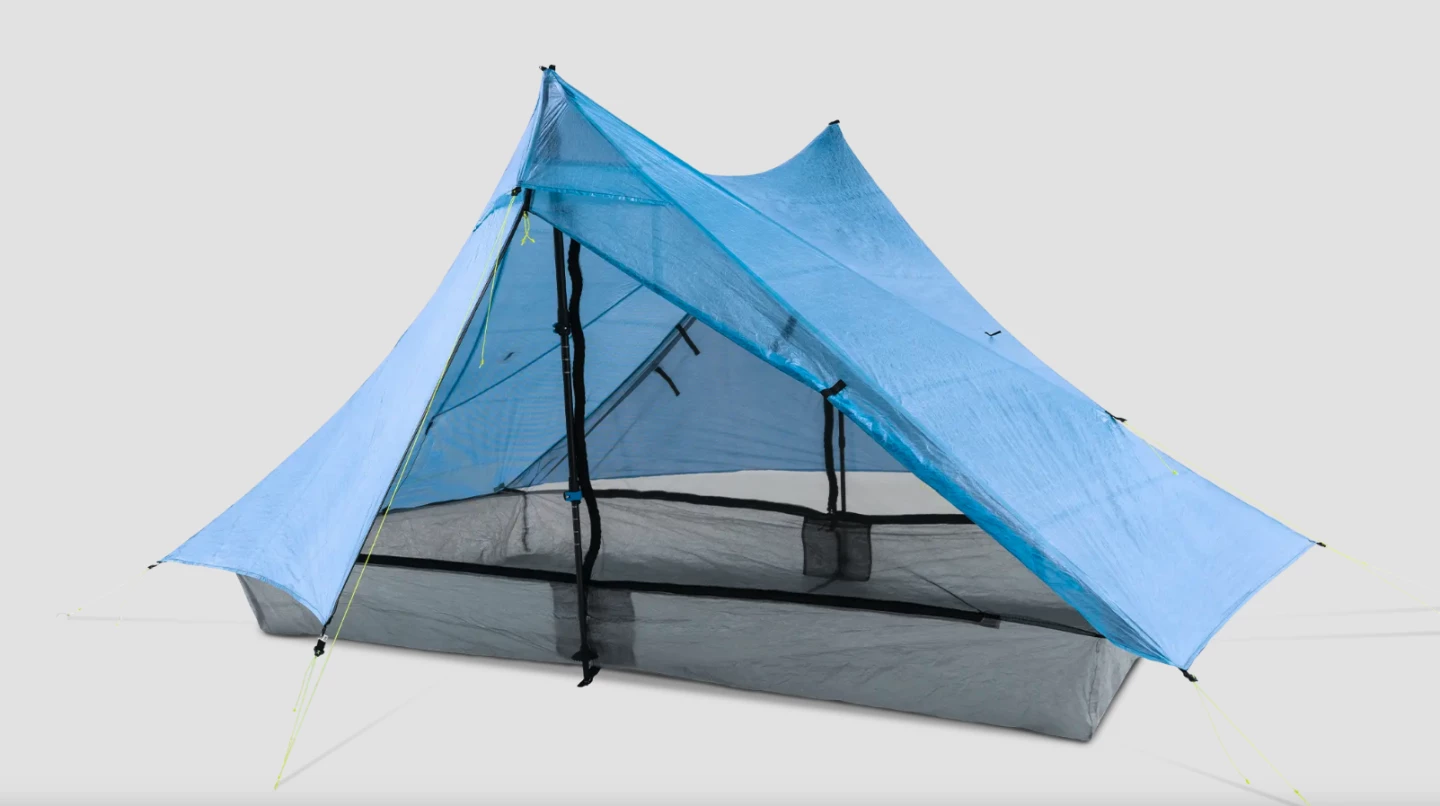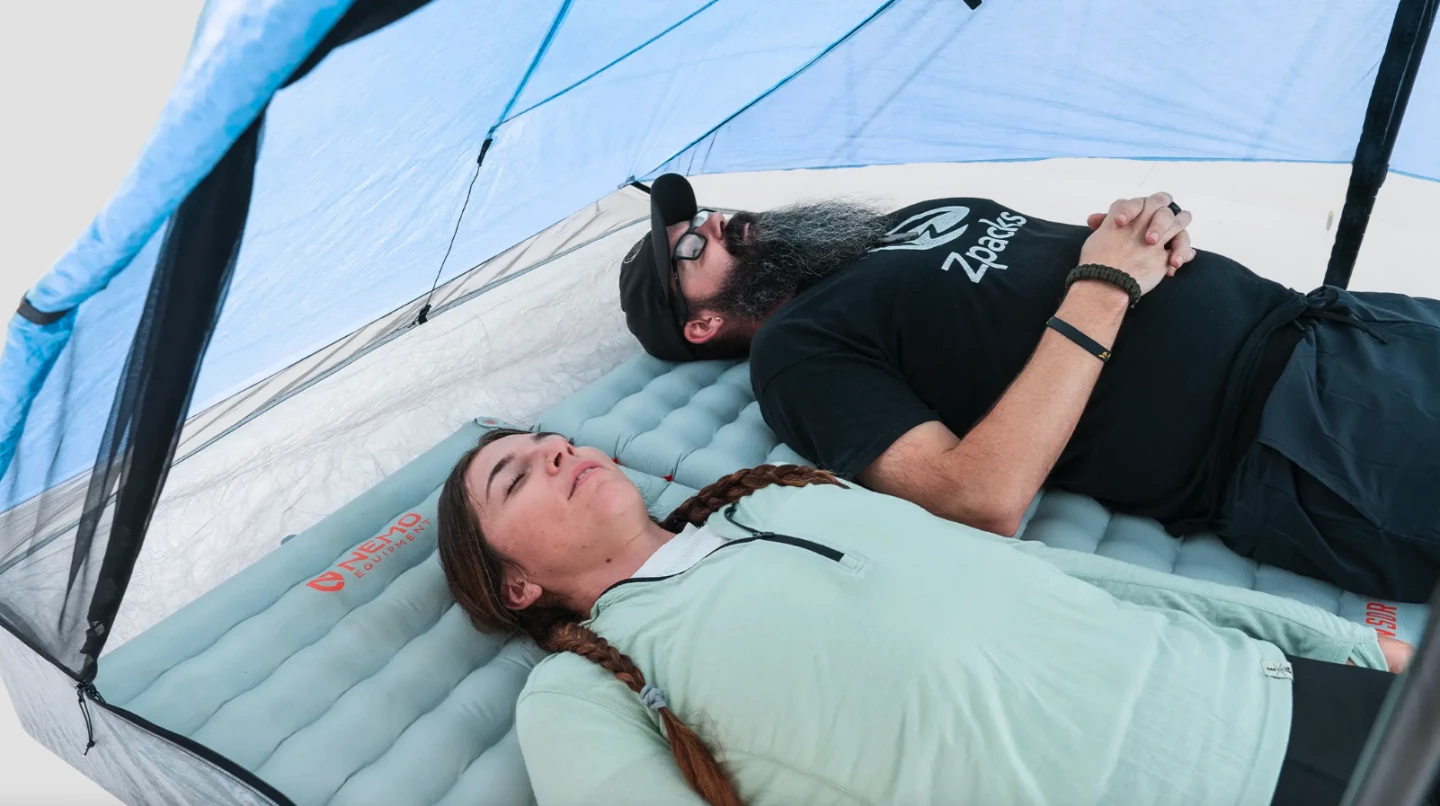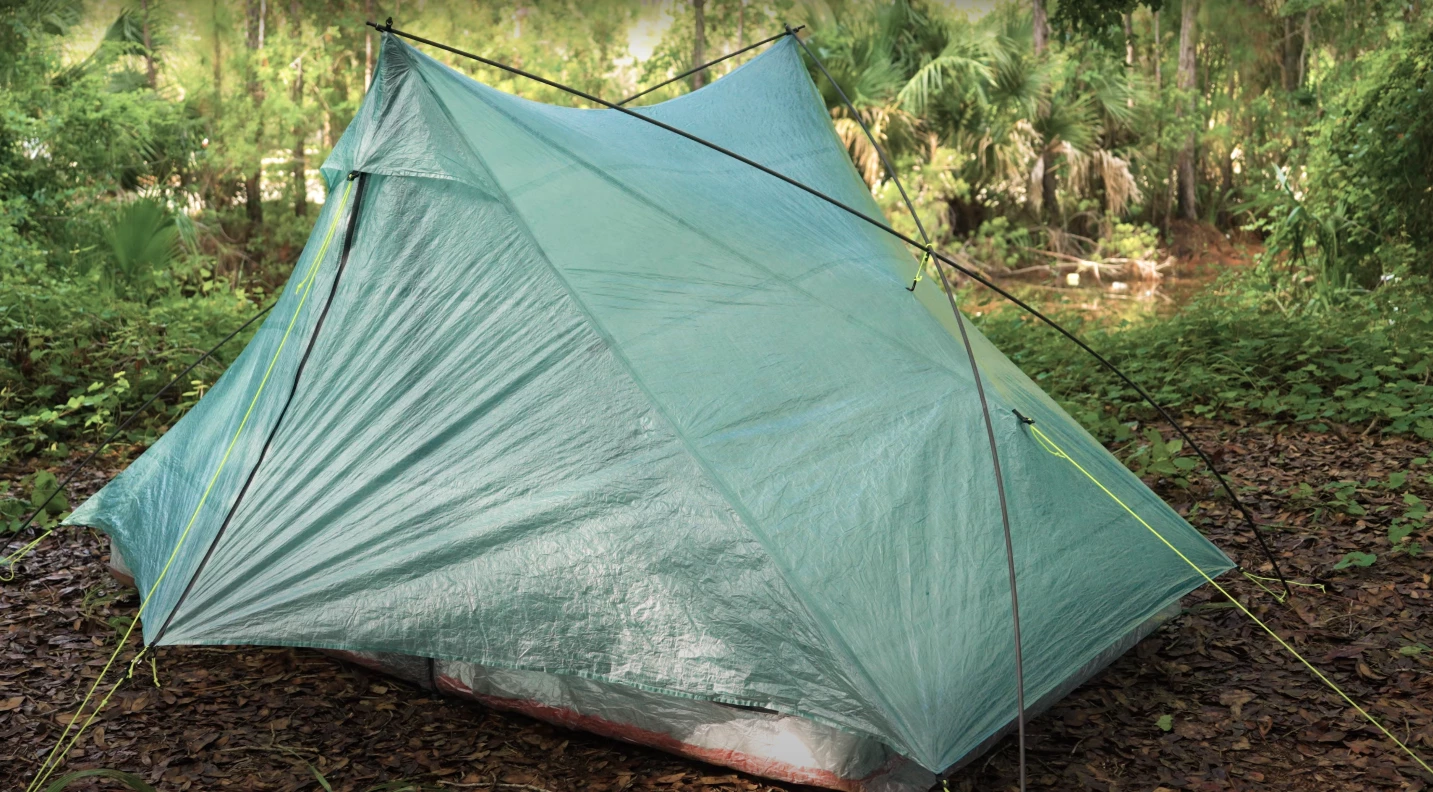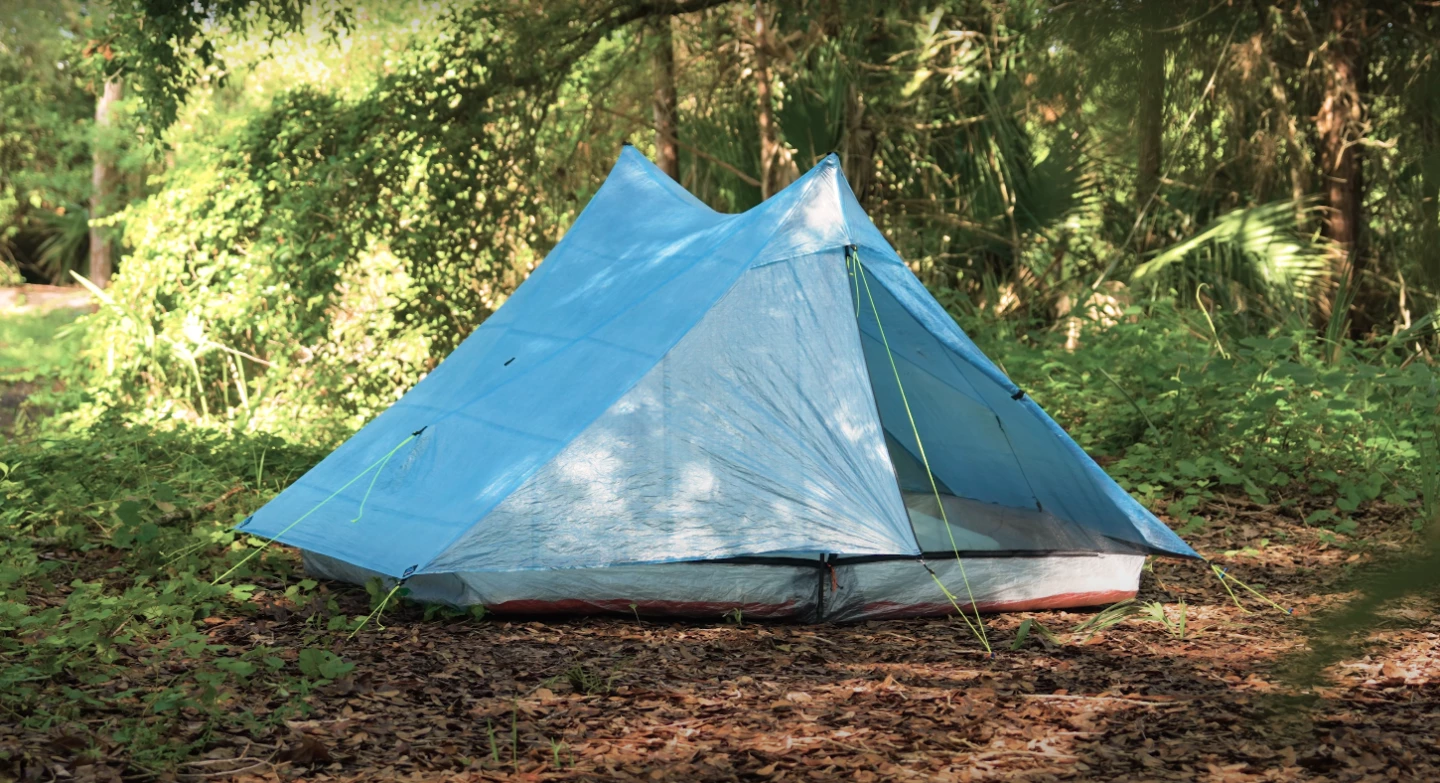American backpacking gear specialist Zpacks already has one of the world's lightest lineups of tents and shelters, with some single-sleepers that flirt with a mere half-pound (227 g). Its new Duplex Pro looks to combine that same beyond-ultralight construction with a comfortable, versatile build that adapts to each backcountry explorer. The tent comes loaded with smart, adjustable features that let buyers get the most personalized performance per pound possible.
Months before we started following the market surge in ultralight freestanding tents from boutique backpacking brands, Zpacks launched one of the first of the bunch. At a crazy-light weight that dips below 2 lb (907 g) – 31.6 oz/896 g, to be precise – the Freezip 2P is also the lightest freestanding two-person tent model we've ever seen.
But the lightest way to build a backpacking shelter is to eliminate the poles of a freestanding design, and a particularly popular means of achieving that goal is by relying on the user's trekking poles to double as tent poles. If you're already carrying a set of perfectly stout poles, why not use them to pitch your tent and dump the weight of a dedicated tent pole system.

Zpacks has done exactly that with most of its shelter lineup, driving minimum weights of its trekking-pole-structured tents right down to 11.7 oz (332 g) with the single-pole Plex Solo series. The new Duplex Pro, which replaces the Duplex Zip in Zpacks' lineup, isn't quite that light, but it does weigh less per person with a total that registers as low as 1.2 lb (554 g) when using a 48-in (122-cm) trekking pole on each side to pitch the roof.
Hitting that 1.2-lb minimum weight requires paying a little attention to the options list because Zpacks offers two distinct build levels. Either way, you're looking at a Dyneema Composite Fabric (DCF) outer tent body and floor, but the "Lite" package uses a mix of lighter weight DCF fabrics to save ounces. The "Standard" package, meanwhile, uses higher weight DCF fabrics throughout for tougher performance, opaqueness and durability. The guy lines also vary in thickness.
By incorporating the lighter fabric package option, Zpacks is able to cut a few ounces as compared to the outgoing Duplex Zip while also making a major improvement. The floor adds an extra 5 inches (13 cm) of width, measuring in at 84 x 50 in (213 x 127 cm). This allows it to accommodate two 25-in-wide (63.5-cm) sleeping pads side by side.

The Duplex Zip, Duplex Light and standard Duplex models all have longer 90-in (229-cm) floors that run narrower at either 40 or 45 in (102 or 114 cm) wide. That longer sizing could prove better for storing gear at the space left beyond one's feet but it also makes for a tighter side-by-side squeeze for two people. The Duplex Pro's wider rectangular floor is purpose-designed to fit two rectangular pads next to each other without issue. Zpacks explains the new floor is also designed so both campers can sleep in either direction, adjusting around wind, slope, views and other factors.
The floor's tall bathtub design protects against ground water and splashing, and the waterproof outer fabric extends down past the upper edge of the tub floor to maintain full weatherproof integrity.
Those who don't hike with trekking poles, or simply prefer a tent with its own freestanding pole structure, can make the Duplex Pro a freestander by purchasing the compatible Duplex Freestanding Flex Kit. That tacks on 11.4 oz (323 g) of weight to bring the tent's minimum heft up to 30.9 oz (876 g), still less than 1 lb (454 g) of tent weight per person, assuming two people are sleeping in it.

Whatever types of poles are holding it up, the Pro incorporates a hybrid wall design with its single body of waterproof-breathable Dyneema canopy and inner mesh entry doors. Users can dial in the perfect combination of ventilation and weather protection by opening or closing each of the four outer door panels, which roll up and secure open via magnetic toggles.
Each inner screen door protects against insects and features a split-L design with a three-way zipper down the middle and out to the corners. The two sides of each mesh door also roll open and secure via magnetic toggle.

When it's time to go, the Duplex Pro packs up into a stuff sack and measures roughly 13 x 7 in (33 x 18 cm). The tent does not come with its own stakes but requires six to eight stakes to properly pitch. Zpacks offers a variety of stakes, and the lightest weigh 0.2 oz ( 5 g) each, adding an additional 1 oz (30 g) to the minimum weight. Throw in the 0.3-oz (9-g) stuff sack, and the total package comes out to a still exceptionally lightweight 1.3 lb (593 g).
Zpacks introduced the all-new Duplex Pro this month and is offering it starting at US$799. The company says the floor is designed to be tough enough to use without a groundsheet, but it does offer a $139 groundsheet sized for the Pro. Zpacks sews together its products at its Florida headquarters and backs them with a two-year warranty.
While we're on the topic of Zpacks, it's worth mentioning that a new batch of its 2-oz Ultralight Camp Shoes dropped this week and are once again available to order. The $35 slip-ons are one of the more affordable products the company offers and tend to sell out quickly.
The intro video below delivers a closer look at the Duplex Pro's many individual features.
Source: Zpacks
New Atlas earns commission from from some items you purchase through our links and you'll be supporting your favorite tech and innovation news site! Thank you!

















